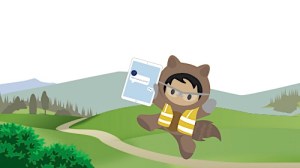What is a chatbot? That’s an important question because whether we realise it or not, technology is steadily becoming a bigger part of our daily lives. In fact, Gartner predicted that the average person would have more conversations with chatbots than with their spouse.
Driven by the promise of intelligent round-the-clock digital support, more companies are using them to engage with customers alongside the now classic channels of phone, email, and social media. A recent study found that 53% of service organisations expect to use chatbots within 18 months — a 136% growth rate that foreshadows a big role for the technology in the near future.
In the workplace, businesses use chatbots to boost productivity and efficiency in a range of ways. They help workers set meetings and reminders, and ask simple questions without stopping what they’re doing, to name just a few use cases. At the same time, all-purpose virtual assistants, such as Amazon’s Alexa, Apple’s Siri, and Google Assistant, are fast becoming the preferred interfaces for consumers to engage with brands across every industry.
But what’s behind the chatbot’s rapid rise in popularity? Are they really effective when it comes to delivering customer service support — and what impact do they have on the customer experience? Below, we explore what businesses need to know about chatbots and what they can do to take advantage of this technology.

But what is a chatbot, exactly?
Technically speaking, a chatbot (derived from “chat robot”) is a computer program that simulates human conversation, either via voice or text communication.
Today, such programs can be customised and used in a variety of ways. These include:
- Chatbots that communicate via smart speakers
- Chatbots that function on smart home devices
- Chatbots that function via popular chat and messaging platforms like SMS, Facebook Messenger, WhatsApp, and LINE
So, in addition to having a conversation with a person (such as a sales rep or a support agent, for instance), people can interact with software that helps find answers quickly. Whether through typing or talking, a chatbot can connect with a customer. More importantly, it can influence a customer relationship by responding to requests faster while meeting expectations.
With the potential for delivering instant responses around the clock, chatbots can also free up customer support teams to apply their emotional intelligence to more complex queries.
How do chatbots work?
One of the earliest examples of a chatbot was a program called ELIZA, built by Massachusetts Institute of Technology professor Joseph Weizenbaum in the mid-1960s to simulate a psychotherapist. Using keywords and pattern matching, ELIZA responded to a user’s typed questions with simple open-ended replies, based on a script.
Later chatbot models included SmarterChild, offered as part of the desktop version of AOL Instant Messenger in the early 2000s. SmarterChild was a rudimentary digital assistant, retrieving requested information like movie showtimes and weather reports.
Over the years, developers have incorporated more sophisticated techniques to enable chatbots to better understand people’s questions and provide more useful responses.
While today’s chatbots still can’t handle all customer queries, they can respond to frequently asked questions or perform straightforward tasks.
“Out of the pool of problems your customers have, there are some that are best suited for a talk with a human. But that’s not something as common as ‘reset my password.’ Agents’ time is precious, so save them for the complex stuff … Let the chatbot take care of the simpler jobs,” said linguist and Lead User Researcher at Salesforce, Greg Bennett.
The simplest form of a chatbot system tackles such tasks by parsing customer input, and then scanning its database for articles related to certain words and phrases. In short, it operates like a document retrieval system, based on keywords. For example, a cosmetics company might create a chatbot that engages users with set questions about their makeup preferences, and then recommends products and offers that match their responses.
In these cases, the computer program behind the chatbot works to a rigid set of predefined rules and has little ability to recognise the way people naturally speak. Think about the times you may have typed a question into a website’s dialogue box and received an answer that doesn’t make sense. That’s likely because the chatbot program recognized keywords in your request, but not the context in which they were used.
What is an artificial intelligence chatbot?
More recently, however, chatbot systems have become much more sophisticated, thanks to significant advances in the field of artificial intelligence (AI). By harnessing enormous amounts of data and cheaper processing power, AI and related technologies — such as machine learning — are helping to dramatically improve chatbots’ quality of understanding and decision-making.

In particular, developers are using natural language processing (NLP) or natural language understanding (NLU) to build bots that can better understand human speech (or typed text). These technologies also make it possible to better discern the intent behind what someone is saying — and to respond more intelligently.
When chatbots are connected to technologies such as NLU, they can learn more complex ways of simulating human conversation, such as maintaining context, managing a dialogue, and adjusting responses based on what comes up in the conversation.
An AI-powered chatbot can also be trained to actively learn from any interaction with a customer to improve performance during the next interaction. For example, such systems can be trained to recognize customer frustration and switch any more complex interactions or problems to a human in the company’s support centre.
Of course, a bot doesn’t need NLU-powered features to be a useful customer channel. The advantage of such features, however, is that the more the customer interacts with the bot, the better its voice recognition systems become at predicting what the appropriate response is. As mentioned, that frees agents up to handle more complex problems.
Research shows that high-performing service organisations are 2.1 times more likely than underperformers to be using AI chatbots. The same study also found that 64% of agents with AI chatbots are able to spend their time solving complex problems, versus 50% of agents without AI chatbots.
And it’s not just service organisations that are embracing chatbots. Fifty-eight percent of marketers say they use AI to automate customer interactions over social channels or messaging apps.
How are AI chatbots used in business?
AI chatbots can be custom-built to meet a range of specific business needs in both business-to-consumer (B2C) and business-to-business (B2B) environments. The most widely used business cases include:
- Providing call centre support. By interacting with an AI chatbot via a call centre application, customers can perform tasks such as changing a password, requesting an account balance, or scheduling an appointment — all without speaking to an agent.
- Providing enterprise support. Chatbots can be integrated with a company’s back-end systems such as inventory management or customer relationship management. An AI chatbot can help sales reps quickly access phone numbers, or help a human resources team perform faster employee onboarding.
- Acting as digital personal assistants. Chatbots can help consumers navigate their daily lives and expedite activities such as ordering groceries or booking a vacation from a mobile device, browser, or chat platform. Apps such as Siri and Microsoft’s Cortana, or products like Amazon Echo with Alexa or Google Home all deploy chatbots to play the part of personal assistant.
In each of these cases, AI is used to augment human skills, rather than replace them. Research has found that 80% of decision-makers believe AI is most effective when deployed in this way.
Business impacts can include reducing costs by enabling self-service in simple scenarios, delivering relevant information faster, and improving the customer experience.
According to recent studies, an increasing number of companies across industries are planning to deploy AI chatbots in the near future to help them offload manual tasks and make space for more strategic work and customer relationships. The use of AI chatbots in the travel and hospitality sector, for example, is projected to grow by a whopping 241% over the coming 18 months. In the consumer goods sector, the projected growth rate is 187%. In healthcare and life sciences, it’s 167%.

How important are AI chatbots for customer experience?
Digital disruption is rapidly raising customer expectations. Today’s consumers and business buyers are more informed and less loyal than their predecessors. They’re looking for differentiated experiences based on trust and understanding, and they will shop around to find them.
Not only do 80% of customers believe that the experience a company provides is as important as its products and services, but more than two-thirds (67%) say their standard for good experiences is higher than ever. And with 76% of consumers and business buyers saying that it’s easier than ever to take their business elsewhere, the pressure is on for organisations to get the customer experience right.
That’s where AI chatbots come in. While chatbots can’t replace humans, they can complement the support-chat experience, giving employees or customers a friendly greeting and direct ways to get what they need — fast.
More specifically, AI chatbots can help companies deliver good customer service in the following ways:
- Reducing customer waiting time. Chatbots can reduce the time customers spend waiting in line. People get immediate answers to common questions (about order status, store hours, or locations, for instance) in a chat window instead of waiting for an email, a phone call, or a response from another channel.
- Resolving support cases. Bots can also be a company’s ally in the race to quickly resolve support cases. That’s because they can immediately answer straightforward questions for customers to make them happier, and they can do it over and over again. Consequently, fewer cases get logged for support agents to resolve.
- Handling efficient redirects for customer inquiries. This is another AI chatbot strength — bots can instantly welcome customers with a branded greeting in a chat window, for example, and quickly direct them to the resources they need.
- Reducing customer waiting time. Chatbots can reduce the time customers spend waiting in line. People get immediate answers to common questions (about order status, store hours, or locations, for instance) in a chat window instead of waiting for an email, a phone call, or a response from another channel.
- Providing agents with leads. By handling initial support interactions with a customer or prospective customer, AI chatbots can help open up conversations that human agents can follow up on. A bot might ask a series of relevant questions, for example, and gather an email address, thus delivering a more qualified lead to a sales rep — who can then use this information to personalize future customer interactions.

Research reveals that in service organisations already using AI chatbots, 68% of service professionals say their teams have seen reduced call and email volume. But AI chatbots also offer enormous potential when it comes to scaling personalised experiences. That’s because these systems’ ability to deliver personalisation becomes ever more pronounced as they get to know customers and use AI to predict the next action they want to take.
In the words of Peter Schwartz, Senior Vice President of Strategic Planning at Salesforce: “Imagine, for example, the impact of a hotel chain’s voice assistant greeting a returning customer with a warm welcome, before alerting them to the fact that the room temperature has been set to their preferred temperature, their favourite playlist uploaded, and the TV tuned to their most-watched channel.
Schwartz also points out that as customers get used to interacting with companies through an AI-powered chatbot, they will expect to do so in all their digital interactions. Recent research underlines this point — 77% of customers believe chatbots are already transforming or will transform their expectations of companies within five years.

What are examples of chatbots?
In the past five years, many customer service leaders have started testing the use of chatbots — both with customers and within their own organisations. The financial services, travel, fashion, and beauty industries have often led the way. For instance, KLM Royal Dutch Airlines has launched “Blue Bot,” a Facebook Messenger and Google Home digital assistant that allows passengers to opt-in to receive flight status information and check-in guidance, among other things.
Leading beauty retailer Sephora is also using messenger chatbot service. Features include Sephora Reservation Assistant (a chatbot that helps clients quickly identify store locations and make appointments) and Color Match (a bot that allows users to scan an image with a smartphone and instantly receive the closest colour match from Sephora’s range of products).
In the financial sector, American Express has rolled out an AI chatbot that enables eligible customers to get on-demand answers to commonly asked account- and card-related queries. Since then, many other financial services organisations have started to test similar offerings. Capital One, for instance, has developed a chatbot called Eno (that’s “one” spelt backwards) that can communicate with the bank’s customers via text message to help them carry out banking transactions such as checking a balance or making a credit card payment.
As well as offering customers the services of a virtual assistant, many organisations use bots to streamline back-office operations. JPMorgan Chase, for example, has launched COIN, a chatbot that can analyse legal contracts exponentially faster than human lawyers can. The organisation also uses bots to grant employees access to software systems and handle common IT requests such as resetting passwords.
What is a chatbot platform?
What’s next for chatbots? To answer that question, we need to consider the phenomenon of the chatbot platform. The last few years have seen a marked rise in the popularity of messaging apps — from Facebook Messenger to WhatsApp, Slack, and LINE. Not only do these apps draw in more users, but people are also spending more and more time on them.
Apple, Google, Facebook, and other leading technology companies have collectively responded by developing their messaging apps into “chatbot platforms.” In short:
- They have begun investing billions of dollars in developing chatbots on their messaging platforms that can handle services such as bookings, orders, and payments.
- That means rather than opening up a range of apps whenever they want to book a flight or ask a question, people can simply stay on their favourite messaging app for a quick, frictionless solution.
- For their billions of users, these platforms now resemble not so much messaging apps but mobile operating systems, where bots are the new apps. What’s more, such platforms can derive significant revenues from mobile commerce.
AI and chatbot technology will continue to evolve, ushering in a new era of text- and voice-enabled user experiences that reshape the customer experience. As the research shows, high-performing service teams are often further ahead in developing AI chatbots to augment their human agents and deliver customer service support. In an age where the speed of service matters more than ever, chatbots are helping companies stay a step ahead.
The 4th Edition of the State of Service
Learn why a surge in chatbot adoption scales the impact of self-service.

























